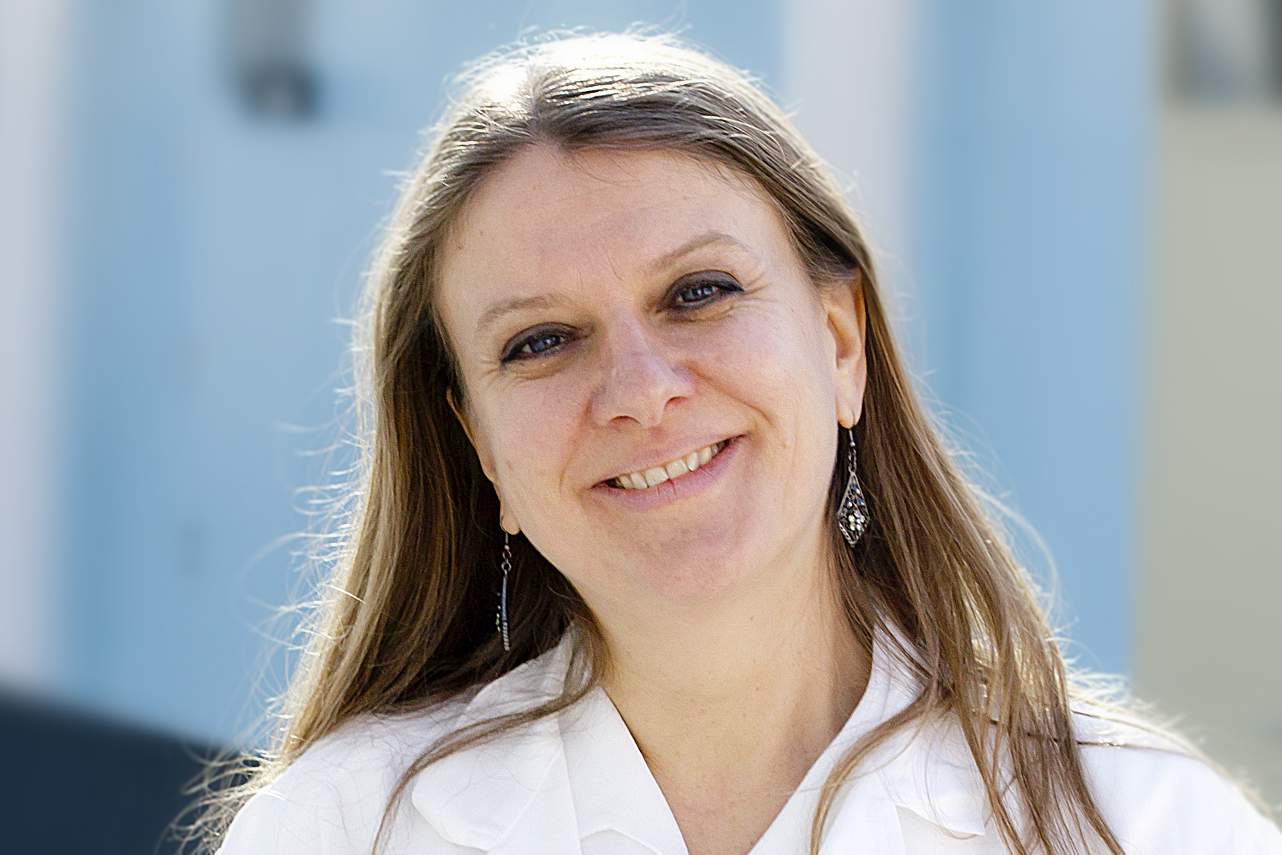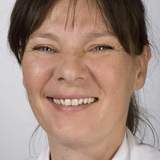Teeth grinding, pain or clicking noises during functional movements are signs of Temporomandibular Disorders. Proper treatment promises good prospects of a cure.

The Special outpatient Clinic of Temporomandibular Disorders is one of the focuses of the Clinical Division of Prosthodontics. Dysfunctions in the craniomandibular system, summarized as Temporomandibular Disorders, are among the most frequent problems in dentistry. However, it will take some time before the symptoms occur. Since pain in the area of the jaw can be caused by a variety of reasons, a – possibly interdisciplinary – approach is necessary. If increasing clicking noises, pain and interferences in functional movements are not taken seriously and treated, this can result in a restricted jaw movement capacity. With increasing severity of the symptoms, the effort needed and the duration of the therapy rise. During the clinical functional analysis, specialised dentists examine the jaw (including temporomandibular joints and muscles) and the head. The influence of other factors such as orthopaedic problems and stress are also taken into account. Furthermore, a magnetic resonance imaging (MRI) can be prescribed in some cases for extended diagnosis.

a.o.Univ. Prof. DDr. Martina Schmid-Schwap
Head of the Special Clinic for Temporomandibular Disorders (CMD)

DDr. Margit Bristela, MSc
Deputy Head of the Special Clinic for Temporomandibular Disorders (CMD)

DDr. Astrid Skolka, MSc
Deputy Head of the Special Clinic for Temporomandibular Disorders (CMD)
Range of Services
When a dysfunction is diagnosed, the chances for a cure are high. The condition for the individual treatment plan is a structured functional analysis.
During the medical anamnesis, general medical problems such as depression, panic attacks, anxiety disorders, joint problems, polyneuropathies and possibly connected syndromes such as fibromyalgia or Chronic fatigue syndrome are also taken into consideration.
During the dental anamnesis, dental and functional problems are assessed. In addition, factors such as traumas, joint problems, stress, sleep position and more are evaluated. In addition to an appraisal of the degree of pain, the frequency, quality and time of greatest pain can provide important hints on the origin of the pain.
In the clinical functional analysis, in addition to a neurological investigation of the face and the
maximal mandibular movements, the sensitivity to palpation of the jaw joints and the masticatory muscles is assessed.
The accepted standard for temporomandibular joint diagnostics is MRI: in addition to an assessment of the bone structures it also enables a good representation of cartilage tissue.
Instrumental diagnostics can provide additional information through axiography. By the use of
axiography, the patient-specific movements of the lower jaw can be registered.
Brux-checker is a wafer-thin analysis and therapy planning foil, with a coloured coating on one side. When it is worn over night, grinding patterns can be easily identified by the abrasion of the surface.
Therapy measures can thus be precisely planned.
With occlusal splints, a relaxed lower jaw position can be established so that teeth and joints are protected, e.g. in the event of nocturnal clenching or grinding. For a successful therapy, the occlusal splints need to be regularly checked and adjusted.
Biofeedback is a behaviour therapy to learn a relaxed muscular position. Previously unconscious body reactions and functions (tensions) are made visible or audible through measuring devices in a
computer-assisted way and can thus be influenced.
Physiotherapy can include physical methods as well as exercises or manual therapy.
A variety of reasons can induce Temporomandibular Disorders. Apart from orthopaedic reasons,
constant stress can also cause teeth clenching or grinding. An interdisciplinary therapeutic approach is therefore often recommended. At the Special outpatient Clinic, a therapy plan will be established for you which is best suited to your individual needs.
Mental disorders can be the trigger or the cause for dysfunctions of the masticatory system, which has a central role in coping with stress. The masticatory system works as a “legal stress valve”.
Grinding and clenching per se are not disorders. Rather they are normal defence mechanisms of the masticatory system to deal with stress.
The Liaison Psychiatry concept stipulates a parallel treatment through dentistry and psychiatry.
Pharmacotherapy and psychotherapeutic intervention, as well as group therapy, (Progressive muscle
relaxation) and hypnotic techniques are used. The Liaison Psychiatry concept is implemented as a
complementary treatment. This enables the patient to accept the psychiatric therapy as a positive form of help and support.
For some patients, snoring can be treated with a device manufactured by the dentist. A snoring
therapy device precludes the lower jaw from slipping to the back due to muscle relaxation while
sleeping and thus constricting the airways.
Signs of Temporomandibular Disorders
Early detection of Temporomandibular Disorders is essential for a cure. With increasing duration of the dysfunction the therapy will take more time and will become more complicated.
It is therefore worthwhile to watch out for the following signs and habits:
- pain in the area of head and face, especially around the cheeks and on the temples
- increasing clicking sounds in the temporomandibular joints
- blocking during jaw movements
- irregular and asymmetric movements of the lower jaw
- restricted mouth opening
- crepitation sounds
- teeth grinding and clenching, especially at night or in case of stress
- enamel cracks on the incisors or visibly abraded incisal edges
- abfraction of tooth fragments along the gingival margin or of parts of fillings or porcelain veneering
Interdisciplinary Therapies for Temporomandibular Disorders
When Temporomandibular Disorders are diagnosed in the area of teeth, masticatory muscles and temporomandibular joints, the conditions for a successful therapy are good. There are different treatment options, which can also be combined. The prerequisite for an individual functional therapy is always a structured functional diagnosis.
Occlusal splints are specially constructed splints. They do not move the teeth, but rather create a relaxed position of the lower jaw and protect the teeth and joints from nocturnal clenching and grinding. To achieve this, the occlusal splints need to be regularly checked and adjusted.
In certain cases, physiotherapy measures can support the effect of the dental treatment. Combining them makes a targeted treatment of the jaw muscles possible as well as the manual relief of the jaw joints. For some patients, physiotherapy alone could be prescribed.
A clinical examination carried out by a medical specialist for orthopaedics can help to find other causes, e.g. in the area of the spine, and treat them on time.
Grinding and clenching can also have emotional causes. In our modern time, which is characterised by rapid changes, time pressure and similar strains, some of us react by “gritting their teeth”. If this is done in a literal sense, the jaw joints can be overtaxed and cranio-mandibular dysfunctions (CMD) may arise as a result.
Tinnitus and oro-facial dysfunctions (speech disorders and/or dysphagia), should be examined by an ear, nose and throat specialist.
Making an Appointment
Head: a.o.Univ. Prof. DDr.in Martina Schmid-Schwap
Deputy Head: DDr.in Margit Bristela, MSc
Deputy Head: DDr.in Astrid Skolka, MSc
Mon - Fri: 8 am - 4 pm
Mon - Fri: 8 am - 2 pm
Sat, Sun, Public Holiday: 8 am - 12 pm
